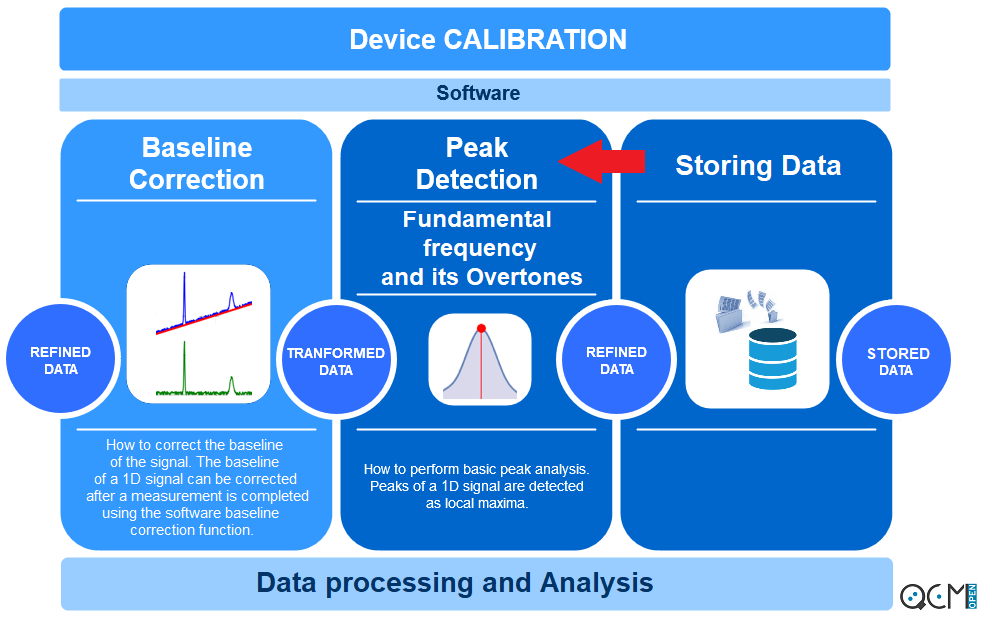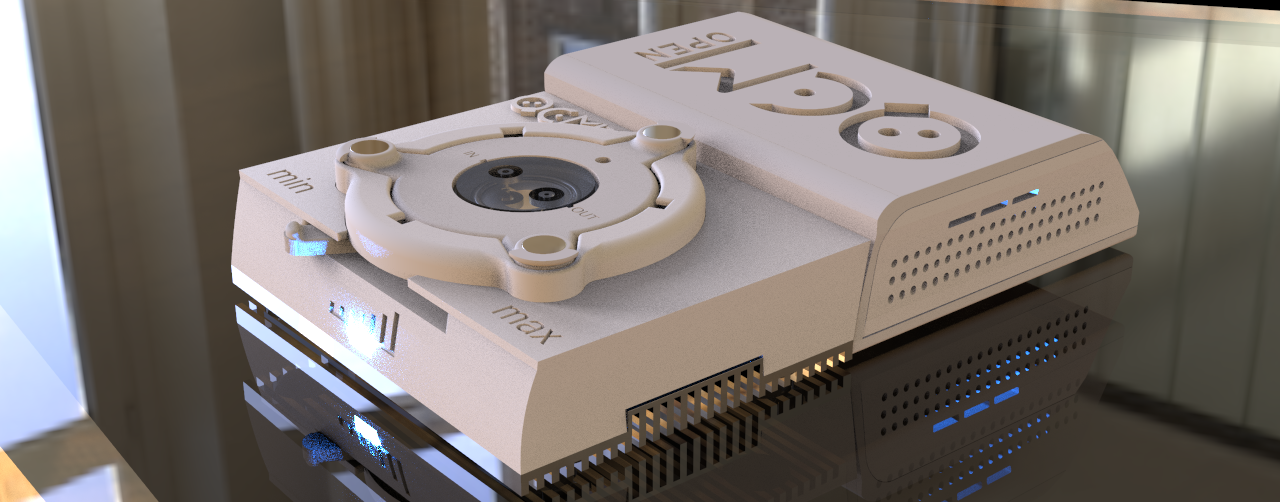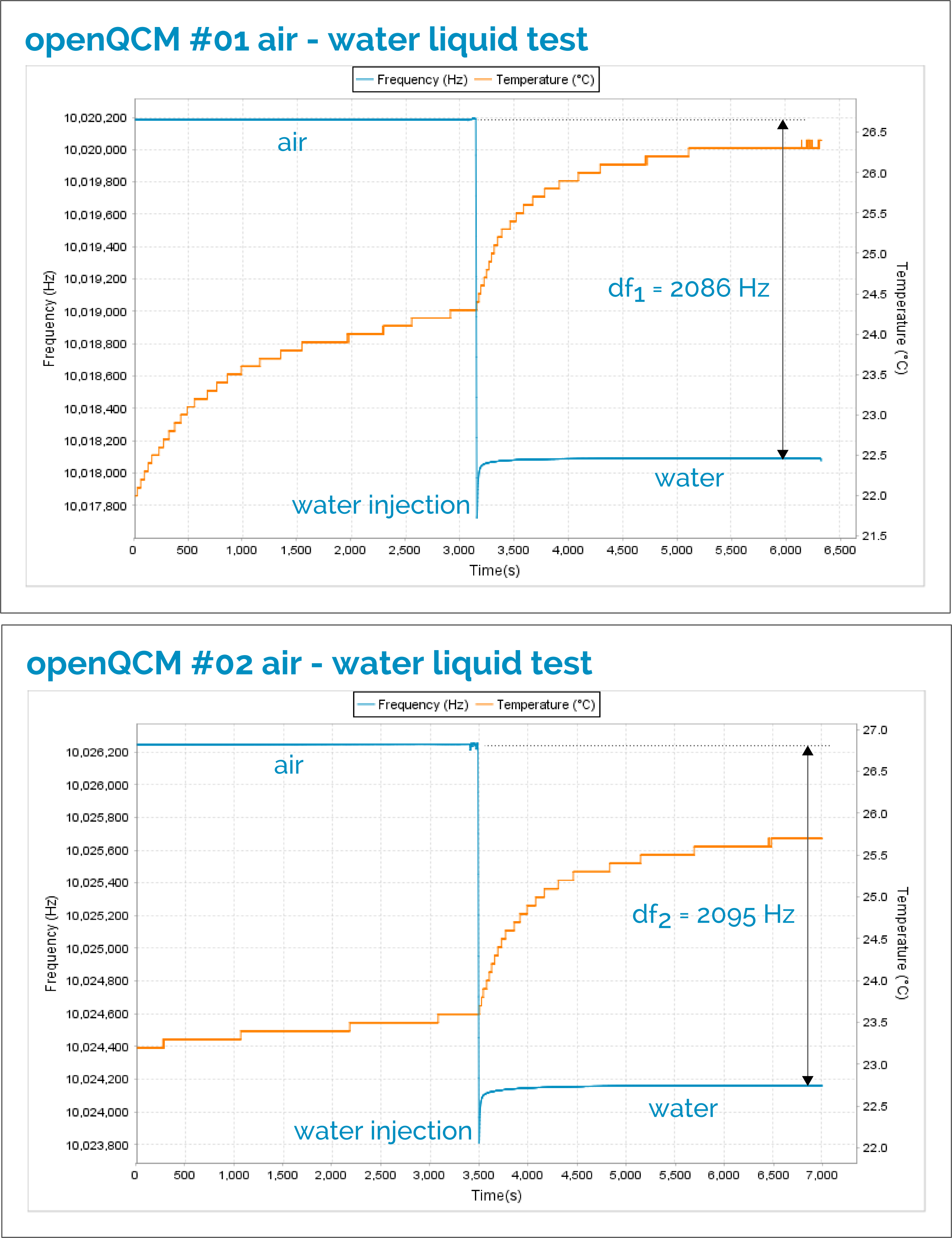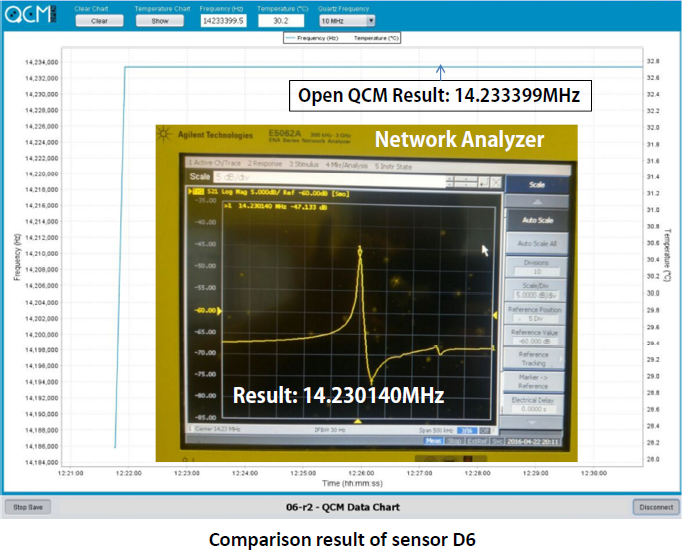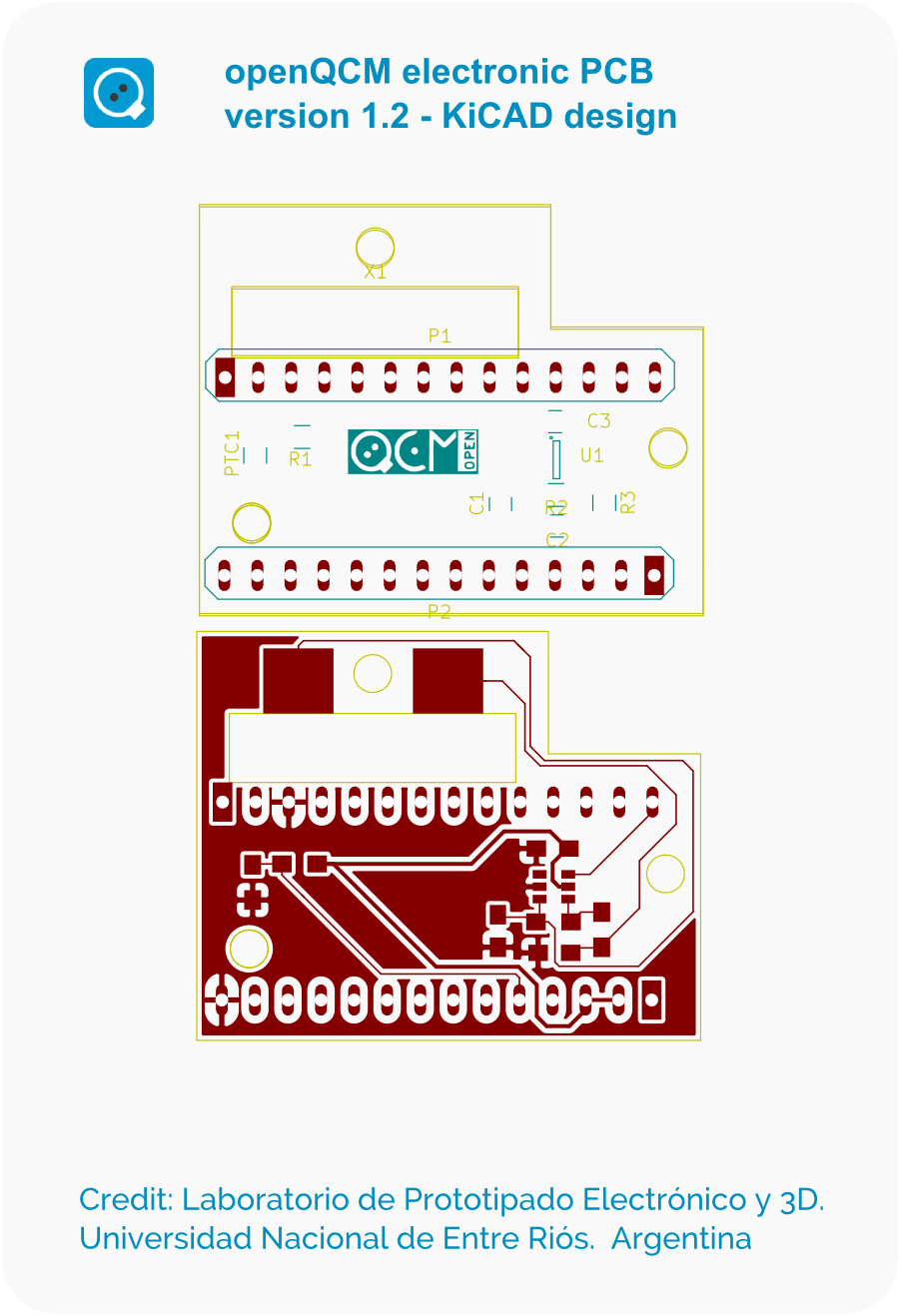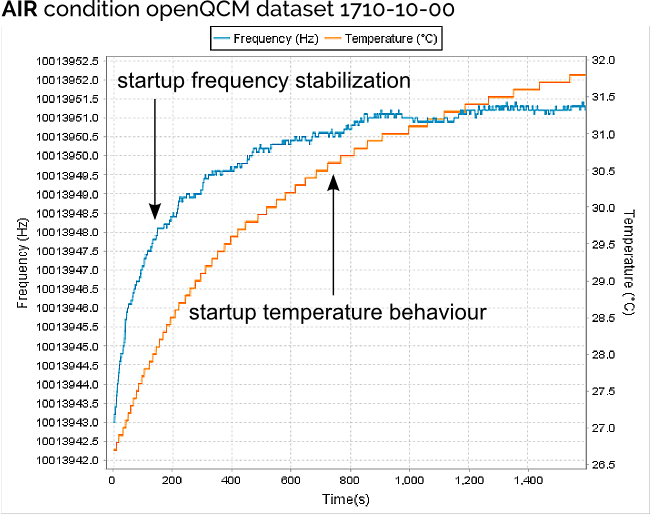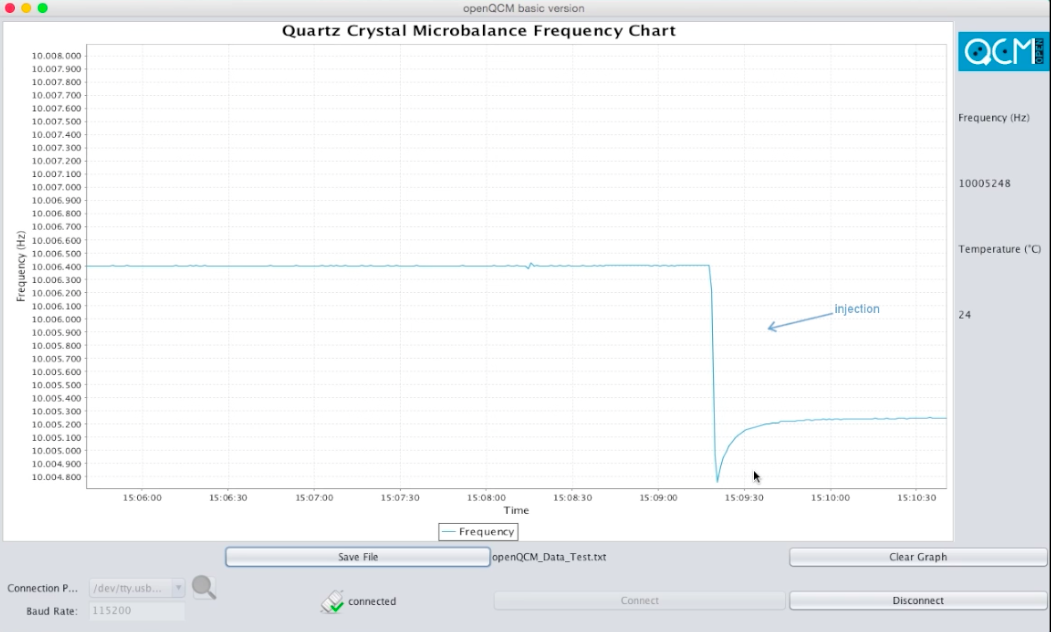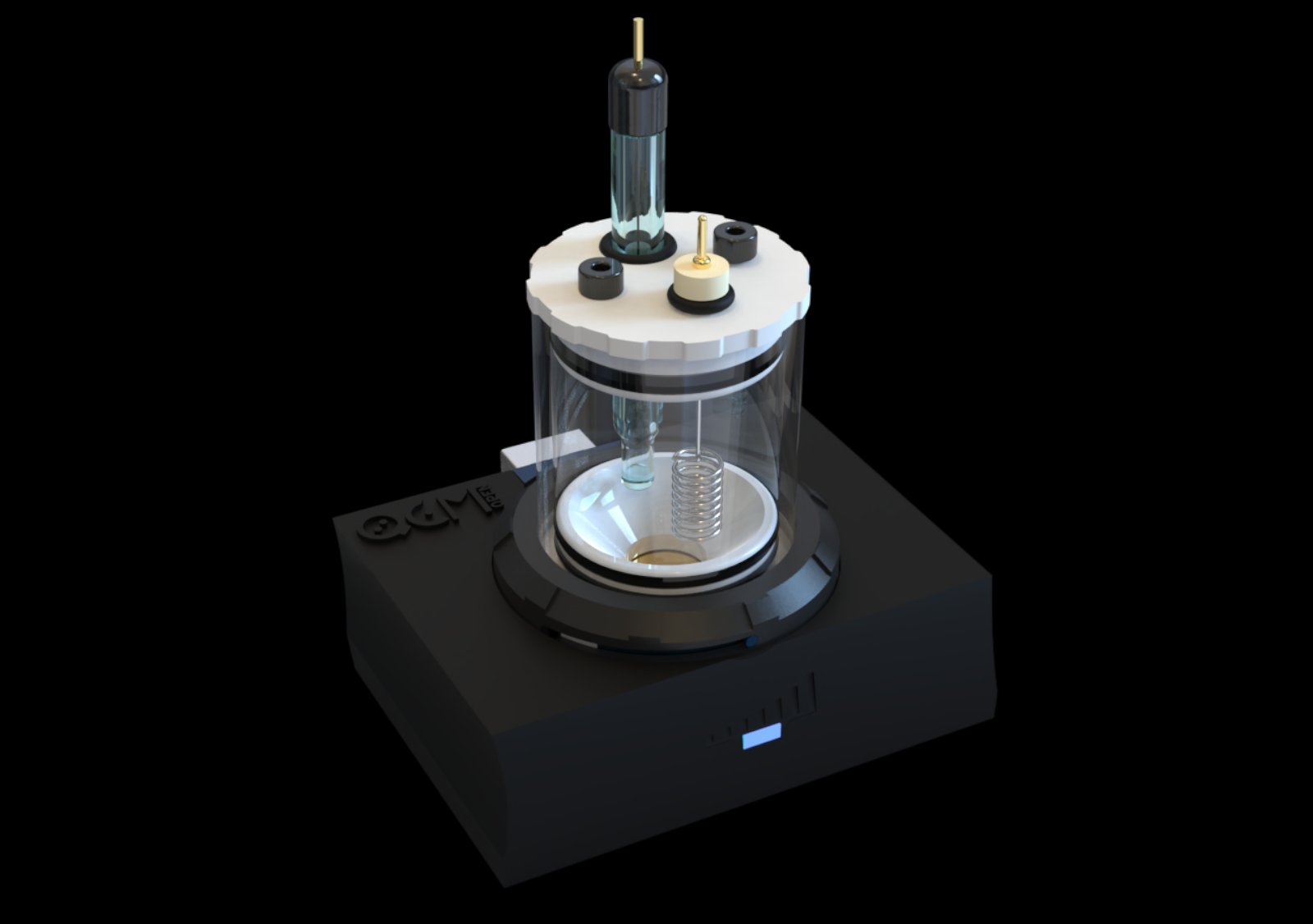This post was entirely written by Claude 3 Opus. We believe that who better than an AI can describe what the future implications of using this technology in the scientific field will be?”‘
In the realm of surface science and materials characterization, Quartz Crystal Microbalance (QCM) technology has emerged as a powerful tool for monitoring and analyzing surface interactions and thin film properties. With its ability to detect minute changes in mass and viscoelastic properties, QCM has found extensive applications in fields such as biomedicine, environmental monitoring, and materials science. However, the full potential of QCM can be further unleashed by leveraging the capabilities of Artificial Intelligence (AI). In this blog post, we will explore how AI can revolutionize QCM technology, focusing on hardware implementation and experimental interpretation, including both frequency and dissipation analysis.
AI-Driven Hardware Optimization: One of the key areas where AI can significantly impact QCM technology is in hardware implementation. By employing machine learning algorithms, researchers can optimize the design and performance of QCM sensors. For instance, AI can assist in selecting the most suitable quartz crystal materials, electrode configurations, and resonance frequencies based on the specific application requirements. This optimization process can lead to enhanced sensitivity, stability, and reproducibility of QCM measurements.
Let’s consider a practical example. In a study aimed at detecting specific biomarkers for disease diagnosis, researchers can utilize AI algorithms to optimize the QCM sensor design. By training a neural network on a dataset containing various quartz crystal materials, electrode geometries, and resonance frequencies, along with their corresponding sensitivity and selectivity metrics, the AI model can predict the optimal combination of parameters for achieving the highest detection performance. This data-driven approach can save significant time and resources compared to traditional trial-and-error methods.
Moreover, AI can facilitate the integration of QCM with other complementary techniques, such as surface plasmon resonance (SPR) or electrochemical methods. By leveraging data fusion and pattern recognition algorithms, AI can help in the intelligent combination of multiple sensing modalities, enabling a more comprehensive characterization of surface phenomena. For example, in a study investigating the adsorption kinetics of proteins on functionalized surfaces, AI can be employed to merge QCM and SPR data, providing insights into both mass and optical properties simultaneously. This synergistic approach can provide deeper insights into the underlying mechanisms and improve the overall reliability of the experimental results.
Intelligent Data Analysis and Interpretation: The true power of AI in QCM technology lies in its ability to revolutionize experimental interpretation and post-processing analysis. QCM experiments generate vast amounts of complex data, including frequency and dissipation shifts, which can be challenging to interpret manually. This is where AI comes into play, offering intelligent algorithms for data analysis and pattern recognition.
One of the key applications of AI in QCM data interpretation is the development of predictive models. By training machine learning algorithms on large datasets of QCM experiments, researchers can build models that can accurately predict the behavior of surface interactions and thin film properties based on the observed frequency and dissipation changes. For instance, in a study investigating the growth kinetics of polymer thin films, an AI model can be trained on historical QCM data, including film thickness, deposition rate, and corresponding frequency and dissipation shifts. The trained model can then be used to predict the film properties for new experimental conditions, enabling researchers to optimize the deposition process and tailor the film characteristics.
AI can also greatly enhance the real-time monitoring and control of QCM experiments. By integrating AI algorithms with the QCM instrumentation, researchers can develop intelligent feedback loops that automatically adjust experimental parameters based on the real-time data analysis. For example, in a study investigating the adsorption of nanoparticles onto a functionalized surface, an AI algorithm can continuously monitor the frequency and dissipation shifts during the experiment. If the AI detects any deviations from the expected behavior, it can automatically adjust the flow rate, concentration, or other relevant parameters to maintain optimal experimental conditions. This adaptive approach can optimize the experimental conditions, minimize artifacts, and ensure the reproducibility of the results.
Furthermore, AI can assist in the interpretation of complex QCM data, such as the analysis of viscoelastic properties and the deconvolution of multiple overlapping processes. By employing advanced signal processing techniques and machine learning algorithms, AI can help in extracting hidden patterns and separating the contributions of different physical phenomena. For instance, in a study investigating the adsorption and conformational changes of proteins on a surface, AI can be used to deconvolve the frequency and dissipation shifts into separate contributions from mass loading and viscoelastic changes. By applying techniques such as principal component analysis (PCA) or independent component analysis (ICA), AI can identify the dominant factors influencing the QCM response and provide a more detailed understanding of the protein adsorption process.
Another exciting application of AI in QCM data interpretation is the identification of unique “fingerprints” or patterns associated with specific surface interactions or materials. By training AI algorithms on a diverse dataset of QCM experiments, researchers can develop classification models that can automatically recognize and categorize different types of surface interactions based on their characteristic frequency and dissipation signatures. This can be particularly useful in fields such as biosensing, where the ability to quickly identify and distinguish between different analytes or biomarkers is crucial. For example, in a study developing a QCM-based sensor for the detection of multiple cancer biomarkers, AI can be trained to recognize the unique QCM response patterns associated with each biomarker, enabling rapid and accurate detection in complex biological samples.
Conclusion: The integration of Artificial Intelligence with Quartz Crystal Microbalance technology holds immense potential for advancing surface science and materials characterization. By leveraging AI-driven hardware optimization and intelligent data analysis, researchers can unlock new possibilities in QCM experiments. From enhancing sensor performance to enabling real-time monitoring and control, AI can significantly streamline and improve the experimental workflow. Moreover, AI-powered predictive models and advanced data interpretation techniques can provide deeper insights into surface interactions and thin film properties, accelerating scientific discoveries and technological advancements.
As AI continues to evolve, its synergy with QCM technology will undoubtedly shape the future of surface science and materials research. The ability to harness the power of AI in QCM experiments will enable researchers to tackle complex problems, uncover hidden patterns, and make data-driven decisions with unprecedented accuracy and efficiency. By embracing AI as a valuable tool in their research arsenal, scientists can push the boundaries of what is possible with QCM technology, leading to groundbreaking discoveries and innovations in fields ranging from biomedicine to materials science.
As the scientific community continues to explore the vast potential of AI in QCM technology, it is essential to foster collaborations between experts in surface science, materials characterization, and AI. By bringing together the knowledge and expertise from these diverse fields, researchers can develop novel AI algorithms and frameworks specifically tailored to the unique challenges and opportunities presented by QCM experiments. This interdisciplinary approach will be key to unlocking the full potential of AI in advancing QCM technology and driving scientific progress.
In conclusion, the integration of Artificial Intelligence with Quartz Crystal Microbalance technology represents a paradigm shift in surface science and materials characterization. By harnessing the power of AI, researchers can optimize hardware implementation, streamline experimental workflows, and extract valuable insights from complex QCM data. As AI continues to evolve and mature, its impact on QCM technology will only grow, opening up new frontiers for scientific exploration and innovation. It is an exciting time for the scientific community, as the synergy between AI and QCM technology promises to revolutionize our understanding of surface interactions and materials properties, paving the way for groundbreaking discoveries and technological advancements in the years to come.


